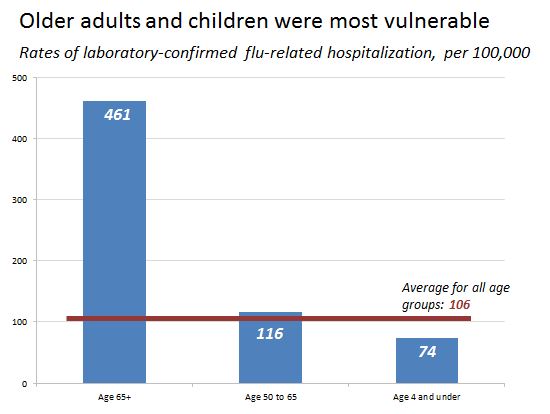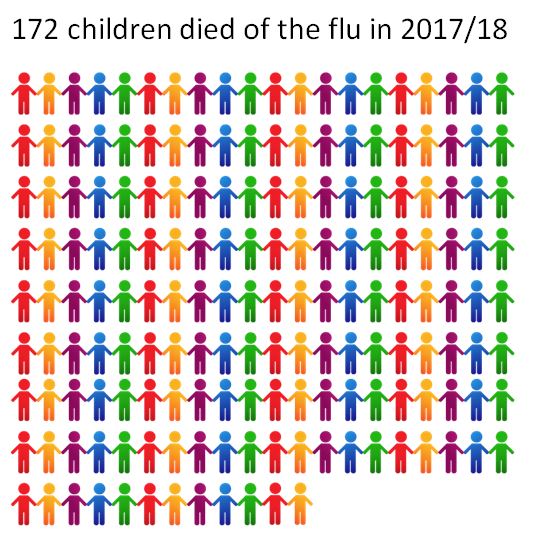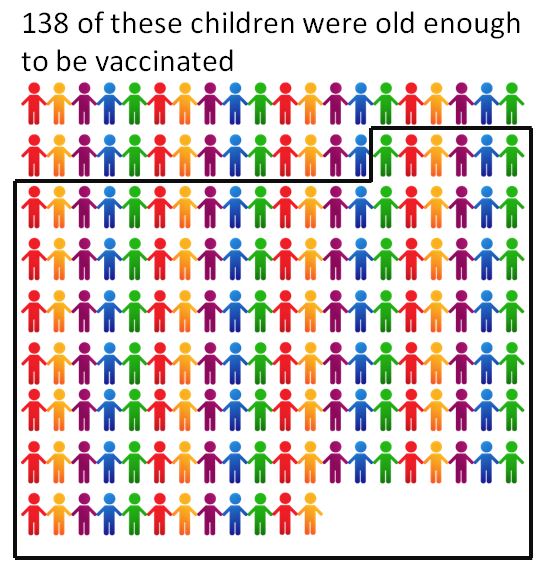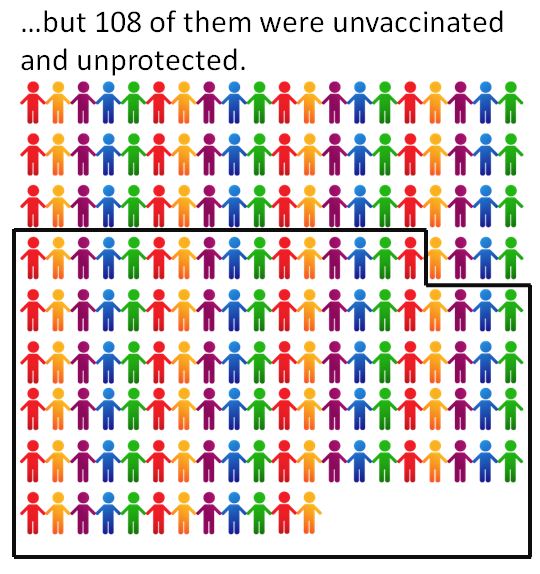Flu season data
Flu season data
The Centers for Disease Control and Prevention (CDC) classified the 2017-2018 flu season as “high severity.” During this past flu season:
- It was everywhere: the volume and intensity of influenza happened in most of the USA at the same time
- It was long:Â flu-like illnesses were at or above the national baseline for 19 weeks, making this flu season one of the longest in recent years
- At the season’s peak, 7.5% of all visits to health care providers in the USA were for flu-like illnesses
The flu doesn’t affect everybody equally. In the USA, older adults and young children had the highest rate of lab-confirmed, flu-related hospitalizations.

People age over age 65 accounted for approximately 58% of all flu-related hospitalizations.
The flu is deadly: during the peak of flu season – for 4 weeks this year – 1 out of every 10 people who died in the USA died of influenza or pneumonia.

Tragically, 172 children died of the flu in the USA this past season. Most of them were unprotected – they had not received the vaccine.



In Philadelphia, the flu season resulted in 49 deaths – including one child.
The best way to protect yourself, your family, and your community is with the flu vaccine. Yes, the flu vaccine is tricky. Each year, scientists make an educated guess about what strains the flu vaccine needs to prepare for, so that manufacturers can start making hundreds of millions of doses before flu season starts. Sometimes, the flu vaccine provides the best protection against one type of flu virus, but a different type emerges as the strongest flu virus.
Even when this happens, the flu vaccine still protects you from getting the flu – and, if you do get sick, it lowers the severity of the illness. Each flu season, everyone should get a flu shot.
